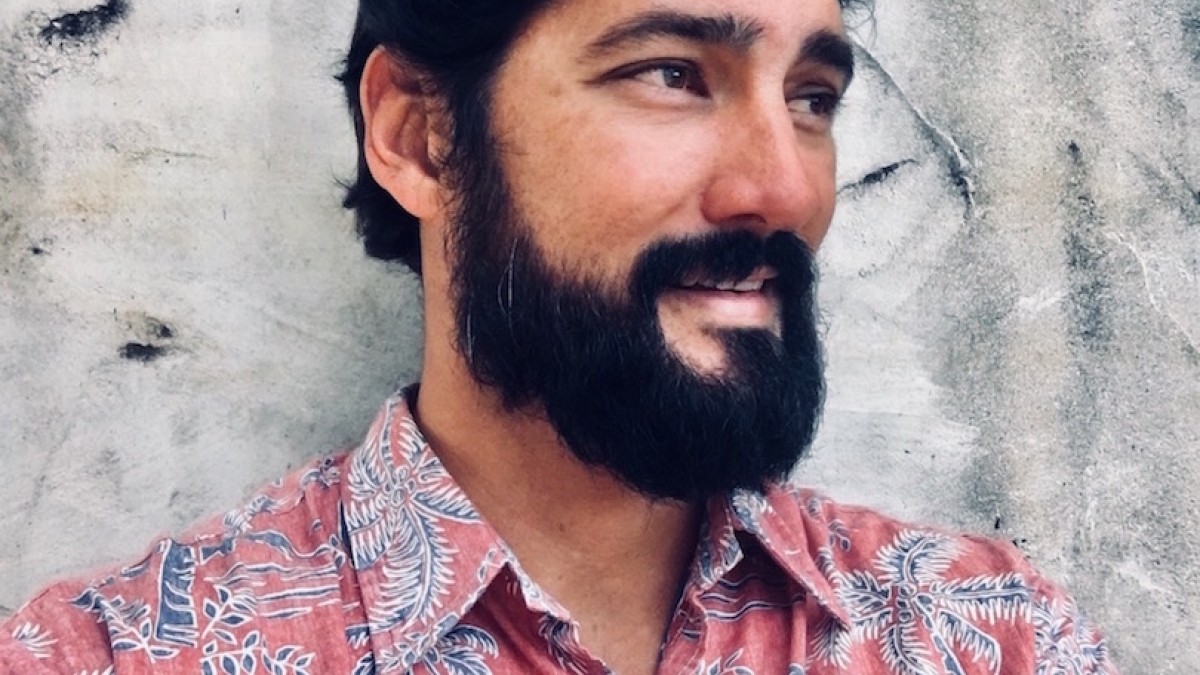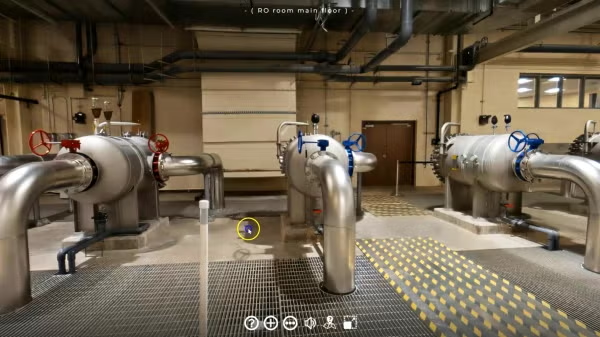Saving the sea: ASU grad aims to turn the toxic tide

Daniel Kinzer is an ASU graduate with a master's degree in biomimicry whose ultimate goal is a resilient, regenerative and inclusive future in his native Hawaii and across our planet.
Editor's note: This story is part of a series of profiles of notable spring 2022 graduates.
Sailing the shimmering blue-green waters between Oahu and Hawaii islands is all in a day’s work for Daniel Kinzer.
The Honolulu native whose passions are marine ecology, innovation solutions to climate change and ocean-related challenges, and reimagining education discovered the perfect — yet least expected — place to advance his education and career: Arizona State University, in the heart of the Sonoran Desert.
ASU’s College of Global Futures, where he is earning a Master of Science in biomimicry through ASU Online this spring, is his latest stop in more than a decade of living, working and learning in international schools, nonprofits and social enterprises across more than 70 countries and all seven continents, including an expedition to Antarctica in December 2018 as part of his fellowship with National Geographic.
“ASU was the only university offering the focused biomimicry graduate degree, and I was stoked to see the university's collaboration with Biomimicry 3.8,” he says. Biomimicry 3.8 is a bio-inspired consultancy that offers clients insights on how to incorporate nature’s time-tested strategies into products, organizations and services, as well professional training and inspirational speaking.
“ASU's reputation for innovation, focus and commitment on sustainability, and ability to access the learning experience from anywhere in the world also convinced me that it was the best learning community for me,” he says.
A master seaman navigating professional success, he has led sustainability, service and entrepreneurial learning programs at Punahou School and Mid-Pacific Institute in Honolulu; served as a teacher fellow for National Geographic and Ecology Project International; and co-created place-based innovation platforms with Purple Mai'a Foundation, Mālama Maunalua and Polynesian Voyaging Society.
Embarking in unchartered waters, he launched Pacific Blue Studios: a Pacific network of community and place-based, youth-powered, design and impact studios leveraging biomimicry, Indigenous perspective and cutting-edge technologies as vehicles to grow, connect and amplify a new intergenerational learning ecosystem. The ultimate goal is a resilient, regenerative and inclusive future in Hawaii, around the Pacific, and across our Blue Planet.
Question: Looking back, what are highlights of your ASU career?
Answer: My time at ASU, and especially through the "in between" spaces and relationships built during the program, led to me developing and launching my own education, conservation and innovation studio, Pacific Blue Studios. It also inspired me to connect with Polynesian Voyaging Society and traditional voyaging and navigation practices in Hawaii and see the ways that ASU was supporting and connecting to PVS' efforts and voyaging plans as well, including in the development of a virtual educational "canoe" that will share voyaging knowledge globally.
I even got to sail with some of the ASU team on a voyage to Maui. For my final project in the Virtual Design Lab, Pacific Blue Studios created a story mapping community called Future Navigators that is setting out to collectively map the Genius of Hawaii and the Pacific with Native Hawaiian and Indigenous youth, and co-create place-based and Indigenous innovations that serve a regenerative future for our blue planet.
Q: What was your “aha” moment when you realized you wanted to study the field you majored in?
A: In 2014, I saw Janine Benyus, author of "Biomimicry" and co-founder of Biomimicry 3.8, share a talk at an Esri Conference about cities functioning like forests. For me, she helped me weave together my passions and interests in nature, conservation, sustainability and innovation.
Q: What’s something you learned while at ASU — in the classroom or otherwise — that surprised you or changed your perspective?
A: One of the greatest lessons I learned while at ASU was the importance of investing in others and in relationships, and placing relationships before tasks. When I started the MS biomimicry program, I thought I was embarking on a solo endeavor, tuning in online from Hawaii and mostly working on my own. Throughout my ASU career, and my studies and practice of biomimicry, it became clear to me how much learning — and especially learning to solve challenging problems — was a team effort and that caring for teammates was a central part of solving the problem.
Q: Which professor taught you the most important lesson while at ASU?
A: Dayna Baumeister (professor of practice and co-director of the Biomimicry Center in the School of Life Sciences) taught me a great deal about navigating complexity, and the importance of creating and tuning in to signals and feedback loops that can inform my own leadership practices and decision-making.
Q: What’s the best piece of advice you’d give to those still in school?
A: Seek balance.
Q: If someone gave you $40 million to solve one problem on our planet, what would you tackle?
A: Creating a new, networked action-learning ecosystem in service of growing a regenerative future to replace our stagnating, dysfunctional and industrial education system.
Q: What are your plans after graduation?
A: I'm looking forward to supporting Polynesian Voyaging Society and Hōkūle'a in their five-year Moananuiākea voyage around the Pacific and their efforts to nurture and grow a network of “navigators” — individuals working to regenerate ocean health and their own local communities — while continuing to develop Pacific Blue Studios into a network of action-learning studios focused on exploration, conservation and place-based innovation.
More Environment and sustainability

2 ASU faculty elected as AAAS Fellows
Two outstanding Arizona State University faculty spanning the physical sciences, psychological sciences and science policy have…

Homes for songbirds: Protecting Lucy’s warblers in the urban desert
Each spring, tiny Lucy’s warblers, with their soft gray plumage and rusty crown, return to the Arizona desert, flitting through…

Public education project brings new water recycling process to life
A new virtual reality project developed by an interdisciplinary team at Arizona State University has earned the 2025…

